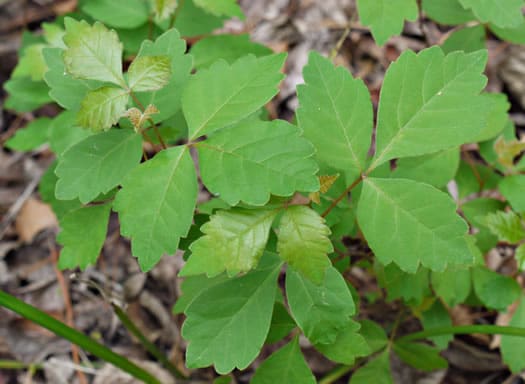Anacardiaceae
fragrant sumac
Rhus aromatica
Synonyms
Lobadium aromaticum
Other Common Names
aromatic sumac, polecat sumac
Plant Type
Shrub (less than 10 ft)
Life Cycle
Perennial
Typical Size
2 ft. tall
6-10 ft. wide
Tolerant of
Drought
Inolerant of
Poorly Drained Soil
Propagation
By seed, By cutting, By division
Plant Propagation Notes
Seeds require scarification followed by cold moist stratification for 30-60 days. Semi-hardwood cuttings can be cut in summer through fall. Rooted suckers can easily be transplanted.
Plant Planting Notes
Allow for up to 10 feet of spread.
Plants/Diseases
No significant issues. Minor susceptibility to leaf spot, rust, scale, and mites. Sometimes galls appear on foliage, but are mainly cosmetic.
Wildlife Benefits
Nectar/pollen source for pollinating insects, Fruit/seeds for birds
Leaves
The glossy, deciduous leaves are trifoliate (three leaflets), alternate, and ovate with serrate margins.
Flowers
Small yellow/green flowers are borne on short spikes. Each flower is 1/8″ long. Male flowers are catkins. Male and female flowers can occur on the same plant or on separate plants.
Fruit
Small, hairy ovoid drupes that turn red as they ripen.
Bark
New growth is brown and pubescent on zig-zag stems.
Toxicity
No known toxicity

USDA Hardiness Zones
3, 4, 5, 6, 7, 8, 9
Light Exposure
Full Sun, Part Sun/Shade
Soil Moisture
Medium
Soil Drainage
Well-drained
Soil pH
Acidic (less than 6.0)
Native in South Carolina?
Yes
Plant Native Habitat
Dry to dry-mesic upland forests and woodlands, glade margins, stream banks, bluffs, and pastures, eastwards primarily in rocky, rather dry, woodlands, usually over mafic rocks (such as gabbro or diabase) or calcareous rocks, less commonly in sandy soils.
Global Conservation Status (NatureServe)
Secure (G5)
Federal Conservation Status (USFWS)
Not Listed
Distribution Notes
Uncommon in the mountains and piedmont. Rare in the coastal plain.
Subspecies
Rhus aromatica var. aromatica




